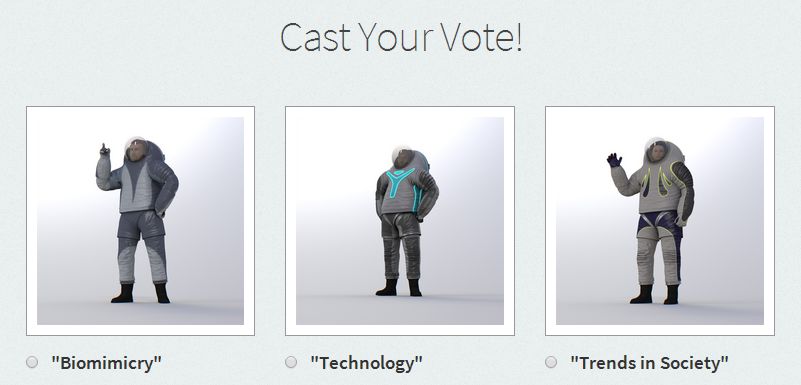Send In The Clones

Have you ever had those moments when you’re standing beside yourself? So far for me, it’s been figurative, not literal. But how long will that last?
It’s been the subject of books, comic books, movies, television shows, and those occasional nightmares featuring killer gerbils armed with lightsabers attacking out of Mordor (or is that just me?). Now the technology has emerged to actually create clones. But is it really such a good idea? And is it as easy as some might believe? And would it make an Alec Baldwin credit card commercial easier to shoot?
First of all, let’s define exactly what a clone is. To most of the English-speaking world, a clone is an exact genetic copy of another biological organism produced through artificial means. Although identical twins have identical genetics, they don’t necessarily qualify as clones. But in the Constitution of the State of Missouri, as of 2006, a clone requires implantation in a uterus. So if a person is incubated in a manner such as in Star Wars Episode II (or using technology currently being developed in Italy), that person is no longer considered a clone, and taxpayers are on the hook to pay for the research. So whether they’re called replicants, gencopies, or whatever alternate B.S. is used to meet the standards of the MO Constitution, as far as I’m concerned, they’re all clones.

There are a couple of methods for replicating a human being. The first one I’ll just mention briefly, since I’ve covered it a couple of times in previous articles. Right now, there is evidence that it can work, but is still in the realm of science fiction. It’s called quantum entanglement. It’s making a particle behave exactly like another before separating from that other particle. It’s also taking a group of particles and causing them to behave exactly like another set of particles. It’s unknown whether this would be sufficient for cloning. After all, just because all organs are intact doesn’t mean that they’re functioning. Ask any mortician.
/science3.gif)
The other method is the controversial one. It’s called Somatic Cell Nuclear Transfer (SCNT). SCNT is when an egg cell is emptied of the chromosomes it contains, and then is injected with the chromosomes from almost any cell of the biological entity it is to become the clone of. Then it is essentially a fertilized egg which then can split and separate (mitosis) into all the cellular components of the biological entity. When it is implanted into a uterus (or in-vitro incubator of some sort), it becomes a zygote, then a blastocyst, then an embryo, then a fetus. This has had numerous problems. The primary one is that cloned animals, when infants, seem to have adult metabolisms. This leads to a rather premature death. The reason is simple.
On the tips of a chromosome is something called telomeres. A telomere is a repetitive DNA sequence at the tips of the chromosomes which protect the chromosomes from degradation and fusing with neighboring chromosomes. But over time, with ongoing cell division, the telomeres gradually shorten. There are other changes to chromosomes over time, but this is one of the most notable. Now think about creating a zygote with forty year old chromosomes. It’s no wonder Dolly the Sheep, CC the Cat, and other such animals died early deaths. Attempts to artificially rebuild telomeres has, thus far, done little more than cause cancer.
And why would anyone do something as stupid as this? The reasons are varied, but the most common is to try and cure disease. It’s all about those pluripotent stem cells. It is believed by many that harvesting stem cells (precursors to defined cells of specific organs) from these inherently flawed clones will somehow result in miracle cures for almost any kind of disease or infirmity. They’re intended to work in much the same way as snake oil was promised to have worked, and seem to have roughly the same results. Actually, the results are different from snake oil. Snake oil wasn’t known to be carcinogenic. Stem cells from SCNT harvesting haven’t been so kind. And unlike adult stem cells, they haven’t been able to cure much of anything other than the state of not having cancer.
But perhaps new organs can be grown from those stem cells. Or maybe not. Anyway, it’s cheaper and easier (and proven to be more effective) to use a person’s own stem cells to accomplish the task. This has already been done. Stem cells harvested from the patient (which function like they’re actually supposed to) have already been used successfully to grow new replacement organs. And not to mention, nobody has been injured or killed by harvesting adult stem cells. The same can’t be said for many women that eggs have been harvested from for SCNT research.
Perhaps another reason is in order. What if we could create entire clones and harvest their replacement organs? Imagine having organs that are ready for transplant since it’s from a person’s clone … just like what led to a civil war on Krypton before it blew up. Did I happen to mention that organs are now being grown from adult stem cells? I did? Well I just mentioned it again.
Maybe there can be entire replacement bodies. Then when one wears out, there’s another one ready. Then again, it’s so much more expensive and ineffective than anti-aging research. Perhaps we can have pre-modified bodies, like bodies made for specific tasks, or maybe even different genders. That’s great for those who are too noncommittal to fly to Switzerland and undergo the surgery.
Then again, what if we need the clones to fight the droid army? Finally, a remotely legitimate reason for creating clones! Leave it to the military to spend more money than necessary by generating clones instead of simply implementing a draft. And even though artificial intelligence is much more likely, I’m more worried about a zombie apocalypse than Skynet.
So in conclusion, there is no good reason to create human clones. I’m not even sure it’s a legitimate way to justify cloning animals for food or scientific testing until a lot of issues are solved. If any mad scientists attempt such a take-over-the-world scheme, we can honestly call them evil, but not geniuses. I hope a little debunking will leave them standing beside themselves … figuratively, not literally.
![]()





